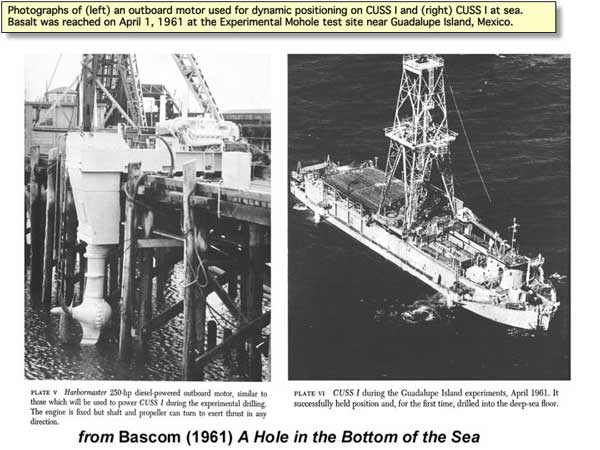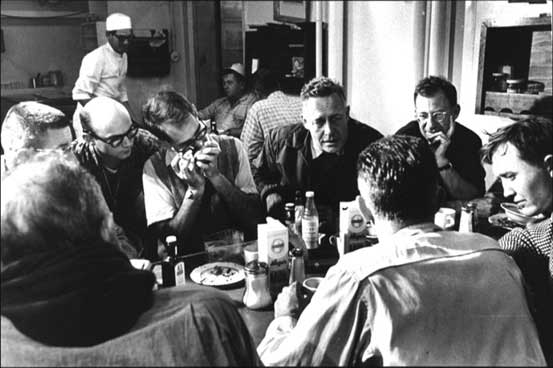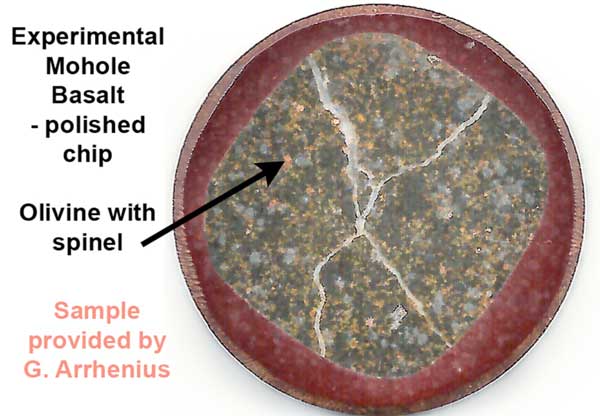50th anniversary of recovery
of the first basalt core by means of scientific ocean
drilling
James
H. Natland
Rosenstiel School of Marine and
Atmospheric Science, University of Miami, Miami, FL
33149
jnatland@msn.com
5th April, 2011
April 1, 2011, April Fools' Day, was the 50th anniversary
of recovery of the first basalt core by means of scientific
ocean drilling. This was at the Experimental Mohole
test site off Guadalupe Island, Mexico, southeast of
San Diego. The drilling took place on a barge, CUSS
I (Figure 1), with dynamic positioning in relation
to a beacon on the seafloor sustained by 4 large outboard
motors.
Participating scientists (Figure 2) included chief
scientist and radiolarian paleontologist William R.
Riedel (with glasses and hands to mouth), Gustav Arrhenius
(far right), and the Director of Scripps Institution
of Oceanography, Roger Revelle (to Riedel's left).
This was the first successful scientific ocean drilling
in deep water, and was the necessary precursor to design
and construction of drilling vessels such as Glomar
Challenger, used by the Deep Sea Drilling Project,
and JOIDES Resolution. Among other luminaries, John
Steinbeck was aboard CUSS I and he wrote an article
that appeared in Life Magazine a week or so later.
In the photograph, Steinbeck is the man with his back
to the camera on the left.

Figure 1: The barge CUSS I.

Figure 2: Participating scientists: A photograph taken
in the galley. William R.
Riedel (with glasses and hands to mouth). Next to him,
facing the camera, from left to right, are Fritz Goro,
Roger Revelle, and Gustav Arrhenius.
Some of this information was recently featured in
an article by Damon Teagle and Benoit Isledefonse,
published in Nature. Next week they will head
out as co-chief scientists on IODP Expedition 335 aboard
JOIDES Resolution to deepen Hole 1256. This is an open
hole that thus far reaches all the way through sheeted
dikes, just into the top of the gabbroic layer in the
eastern Pacific. Further deepening of the hole should
penetrate rock that once was at the level of the seismically
detected melt lens of the East Pacific Rise. This is
expected to provide a complete section for in situ
evaluation of the important Layer 2 - Layer 3 transition.
Figure 3 shows a mounted and polished basalt
chip from the Experimental Mohole drilling. Recent
Cr-spinel analysis of this chip, which is fairly
primitive basalt, somewhat figuratively represents
the closest we have come to the mantle, by drilling
directly through basalts in a Mohole venture.

Figure 3: Polished chip of basalt from the Experimental
Mohole drilling core.
Reference
Teagle, D. & B.
Ildefonse, Journey to the mantle of the Earth, Nature, 47,
437-439, 2011.
